Aims of the activity and description of target group
This activity brings the participants into the public space where they will later carry out their project. They explore the area where potential volunteers can be found and gather impressions that will help in the design and implementation of the project.
Ideally, the activity should be carried out in the real environment of the project. If this location is too far away, participants should try to gather as much information as possible by researching on the internet and perhaps contacting people this way. The activity is suitable for researchers and citizens in a group or individual learning setting. Session 1 and Activity 2 should be carried out beforehand.
Resources, Materials needed
Paper, pen, camera
Duration
60 minutes + way to the location
Step 1 – Select an area for exploration (should be done before the activity)
Determine the area that could be suitable for the implementation of your project. First think about what your project requires:
- Certain natural conditions (e.g. a particular habitat or the presence of other natural resources such as the sea, lakes, rivers,...)
- A geographically limited area (e.g. a natural habitat, a neighborhood, a village,...)
- A particular social constellation (e.g. a neighborhood with many families, a neighborhood with special needs,...)
- An online community (e.g. member of a social media platform or a research platform)
Take a paper and start by defining the target group:

Then gather where you can find the audience and mark your favorite spot:
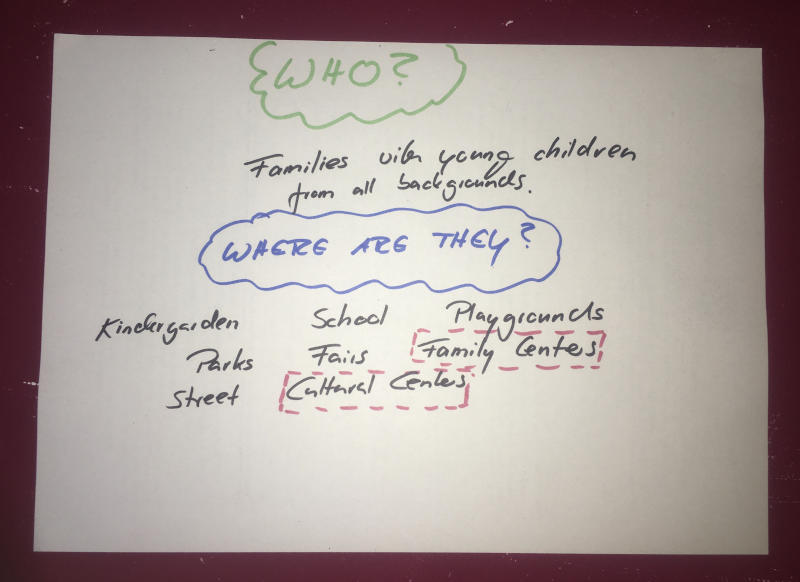
Find out if the place is open to the public or if you need to make an appointment to gain access or take other measures to enter the community. It is also good to inform people before you go there and explain what your mission is.
Step 2 – Explore the field (15 minutes)
Explore the area around your destination and take notes of your first impressions. If the area allows you to take photos or videos, collect some impressions. Make sure that you do not infringe on the property rights to images or the privacy of individuals. If you are in an online environment, take some screenshots. Create a small collage of your impressions after the visit.
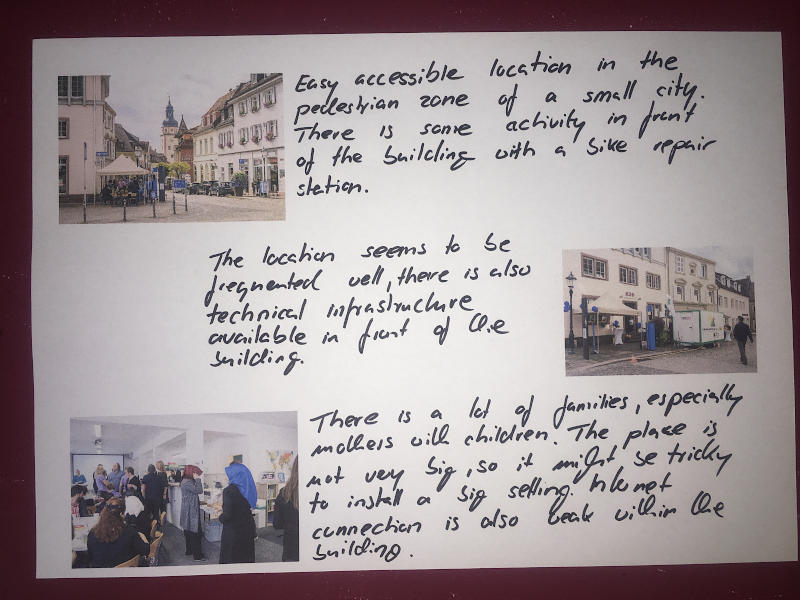
Step 3 – Talk to people (25 minutes)
Talk to as many people as possible and find out what role they play and what their motives are. Present your project idea as you learned it in the previous activity and see what people have to say about it:
- Would they be willing to participate in the project?
- Do they understand the project idea?
- Do they like the project idea?
- What words and language do they use to talk about the project?
- What questions do they have?
- What concerns do they have?
Step 4 - Summarize the results (10 minutes)
Take some notes during the interview and summarize your findings later. Divide a sheet into 4 sections: one for positive aspects, one for negative aspects, one for questions and one for ideas:
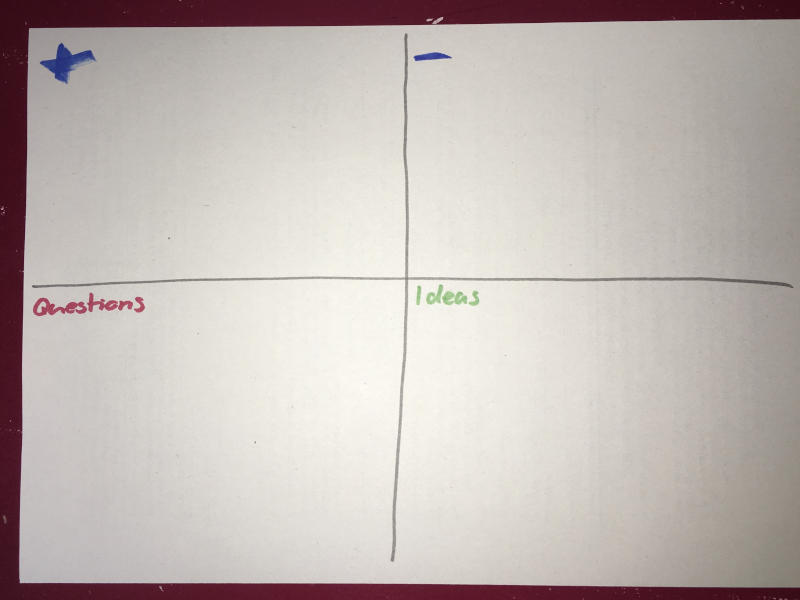
Enter your observations and experiences on the sheet:
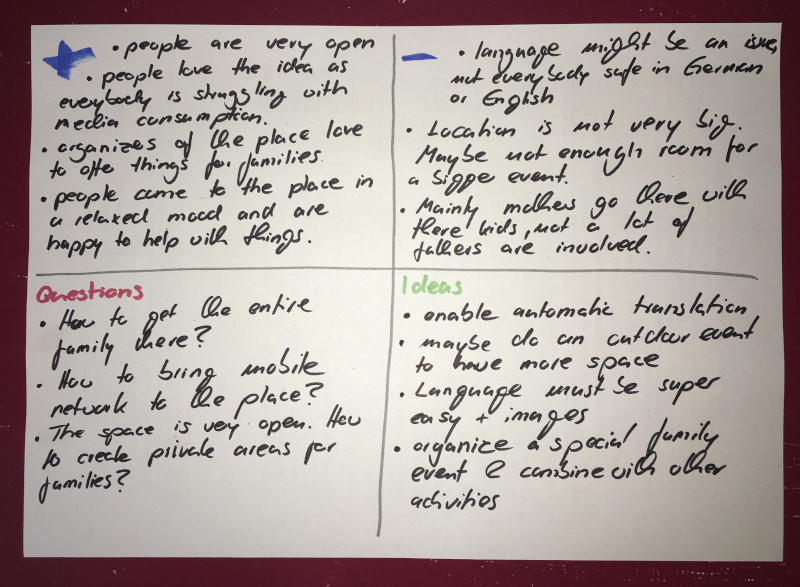
Step 5 – Conclusion (10 minutes)
Summarize your impressions and experiences and think about the following questions:
- Does the target group fit your project?
- What needs of the audience must be taken into account?
- Is the location suitable for your project?
- If not, what should the location be able to do?
At the end, you should have an initial assessment of whether your target audience actually meets the requirements of your project and whether the location is suitable for carrying out the project.
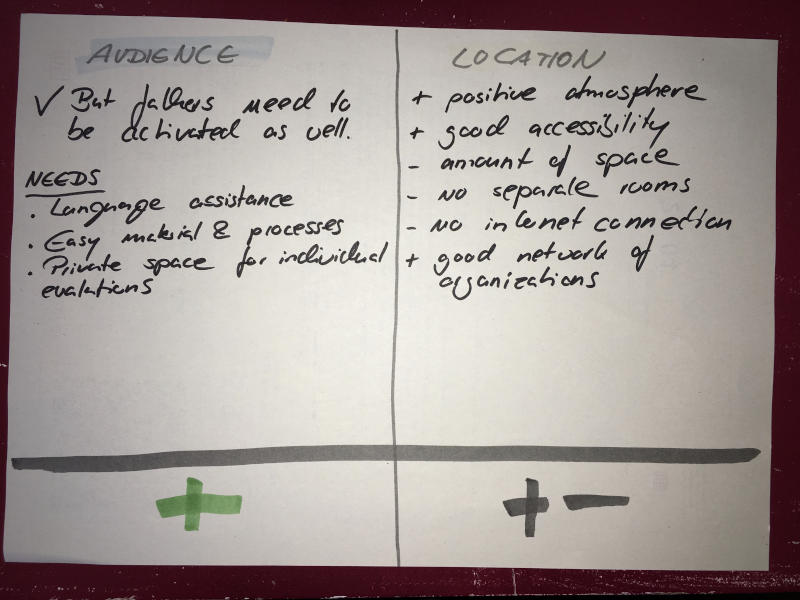
Learning Outcomes - which skills are addressed?
The participants learned how to find a suitable target group and a suitable location for their project. Participants got to know the language and interests of the target group. They practiced presenting their project to non-scientists. Participants learned how to recognize needs, obstacles and opportunities in the actual environment.
How do you check the outcomes are reached?
The participants have a checklist for the target group and the location, including the needs and hurdles, and an assessment of whether both are suitable for the project.
De-Briefing questions
- How did you feel when you visited the public space and talked about your topic?
- Do you think the area is suitable for the implementing of your project?
- Could there be better areas to carry out the project?
Further links and readings
- Pfeifer, Anne (2018): The Perfect Usability Test Participant & How to Deal with Difficulties. https://usertimes.io/2018/10/25/perfect-usability-participant/ (last viewed 06/24/2024)
- West, Sarah & Pateman, Rachel (2016): Recruiting and Retaining Participants in Citizen Science: What Can Be Learned from the Volunteering Literature? https://theoryandpractice.citizenscienceassociation.org/articles/10.5334/cstp.8 (last viewed 06/24/2024)
